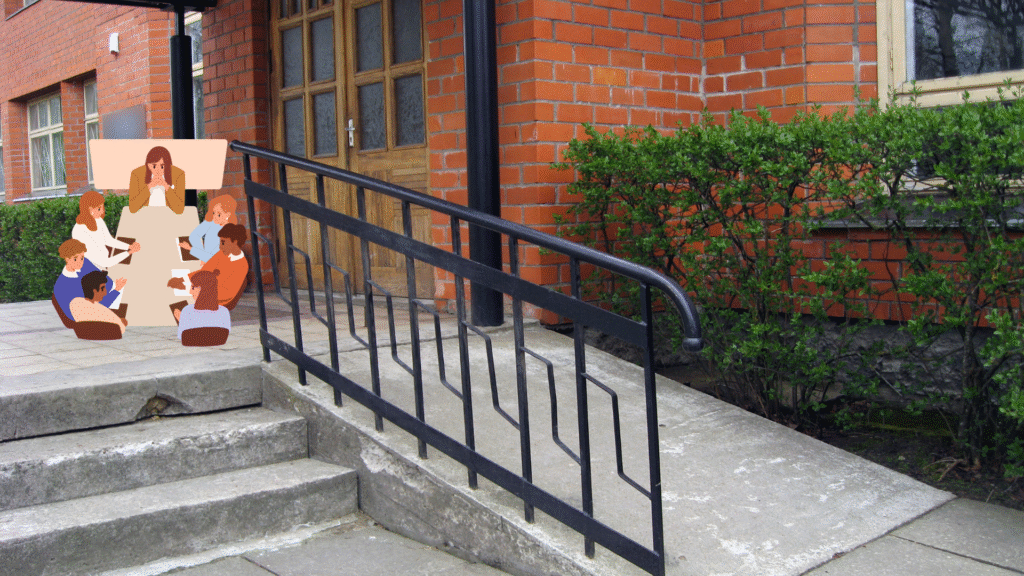Inclusive shopping isn’t just about ramps and wide aisles. It’s about people. For many Australians with disabilities, the biggest barrier in a shopping centre isn’t the physical layout—it’s the lack of informed, respectful customer service. Poorly trained staff can unintentionally create uncomfortable, frustrating, or even discriminatory experiences that drive customers away.
If retail teams aren’t prepared to interact confidently and sensitively with all customers, accessibility efforts fall flat. That’s why inclusive customer service training isn’t optional, but it’s essential.
Let’s explore how to turn your staff into confident accessibility champions and why this shift is good for people, brand trust, and your bottom line.
Why Inclusive Customer Service Matters
Customer-facing staff are the frontline of the retail experience. Whether it’s a security guard, cashier, store assistant, or greeter, their actions shape how welcome a person feels.
Disability-inclusive shopping is about more than compliance. It’s about respect, independence, and dignity. When staff understand how to serve everyone—regardless of mobility, vision, hearing, or cognitive differences—customers feel safe, valued, and more likely to return.
Positive, accessible customer service boosts:
- Customer loyalty
- Word-of-mouth recommendations
- Reputation in the local community
- Compliance with the Disability Discrimination Act (DDA)
Common Accessibility Mistakes Staff Make
Even well-meaning employees can unintentionally exclude customers. Some common issues include:
- Talking to a companion or carer instead of directly addressing the person with a disability
- Offering unsolicited physical help without asking
- Blocking accessible paths with signage or stock
- Making assumptions about someone’s abilities based on appearance
- Lacking knowledge of how to operate accessibility features in-store
These moments may seem small, but they can have a lasting negative impact.
Core Elements of Disability-Awareness Training
Effective training doesn’t require a huge budget. It starts with understanding. Here’s what your program should cover:
1. Understanding Different Types of Disabilities
Introduce staff to physical, sensory, cognitive, and hidden disabilities. Help them understand that not all disabilities are visible.
2. Communicating with Confidence
Teach respectful, person-first language. Give staff scripts and phrases that help them approach customers appropriately and without fear of offending.
3. Recognising and Removing Physical Barriers
Train staff to identify common accessibility issues—blocked ramps, high counters, hard-to-reach items—and how to address them promptly.
4. Emergency Procedures for All
Ensure your team knows how to assist customers with disabilities during fire drills, evacuations, or other emergencies.
Simple Etiquette When Assisting Shoppers with Disabilities
Here’s a quick refresher on inclusive etiquette:
- Always ask before helping. A simple “Would you like assistance?” goes a long way.
- Speak directly to the customer. Never talk over them to their companion.
- Be patient. Allow time for communication, especially with people who use AAC devices or interpreters.
- Avoid assumptions. Not all wheelchair users need help. Not all disabilities are visible.
Role-Playing and Scenario-Based Training Examples
Real-world examples make training more effective. Include practice for situations like:
- A customer who is deaf and needs help understanding a store announcement
- A person using a powered wheelchair who asks for assistance reaching a shelf
- A parent of a child with autism navigating a sensory meltdown
Role-plays prepare staff to respond calmly and helpfully. Use feedback sessions to highlight respectful, inclusive behaviours.
Building Long-Term Awareness Culture in Retail Teams
One-time training isn’t enough. Building a truly inclusive team means:
- Regular refresher courses
- Incentivising staff who champion accessibility
- Including inclusive practices in performance reviews
- Appointing an accessibility lead in each store or centre
Fostering this culture means accessibility becomes embedded in everyday operations—not just an afterthought.
At Assistive Tech Hub, We’re Here to Help
We believe real inclusion starts with people. That’s why we support shopping centres and retail stores across Australia with accessible products and education.
Whether you’re a national brand or a local shop, we offer:
- Free accessibility recommendations for retail teams
- Helpful resources and training tools
- Assistive technology designed for public spaces
You can also explore our guide to Assistive Technology in Shopping Centres or reach out through our Contact Us page.
Key Takeaways
- Staff training is the foundation of a welcoming, inclusive shopping experience
- Most accessibility mistakes are avoidable with the right education
- Empathy and preparedness improve customer loyalty and brand reputation
FAQs
Q: How often should retail staff receive disability-awareness training?
A: Ideally, staff should receive annual training, with new employees trained during onboarding.
Q: Do we need to hire outside experts for this training?
A: Not necessarily. While experts help, you can start with in-house programs using guides, videos, and online tools from credible sources like disability organisations and the NDIA.
Q: What if we don’t often serve customers with visible disabilities?
A: Inclusion isn’t about who you see—many disabilities are invisible. Everyone benefits from a respectful, inclusive environment.
Q: Does inclusive training really affect sales?
A: Yes. Accessible service encourages repeat visits, boosts satisfaction, and supports your brand reputation. It also reduces the risk of discrimination complaints.
Need help making your team more inclusive?
Contact Assistive Tech Hub today for free training resources and inclusive retail tools.
Let’s make Australian shopping centres welcoming for everyone.



